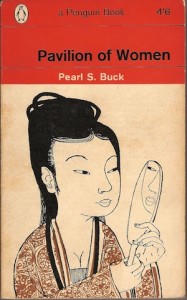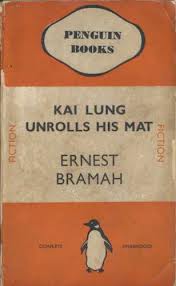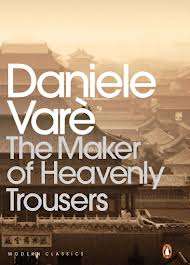Posted: August 2nd, 2013 | No Comments »
A new book by Kee How Yong, The Hakkas of Sarawak, on the Hakka Chinese community of Sarawak and their involvement, real or supposed, in the Communist movement in 1960s/1970s Malaysia…

This book tells the story of the Hakka Chinese in Sarawak, Malaysia, who were targeted as communists or communist sympathizers because of their Chinese ethnicity the 1960s and 1970s. Thousands of these rural Hakkas were relocated into “new villages” surrounded by barbed wire or detained at correction centres, where incarcerated people were understood to be “sacrificial gifts” to the war on communism and to the rule of Malaysia’s judicial-administrative regime.The Hakkas of Sarawak looks at how these incarcerated people struggled for survival and dealt with their defeat over the course of a generation. Using methodologies of narrative theory and exchange theory, Kee Howe Yong provides a powerful account of the ongoing legacies of Cold War oppression and its impact on the lives of people who were victimized by these policies.
Posted: August 1st, 2013 | No Comments »
A while back I blogged on the occasional appearance of Chinese lanterns in European literature – Bel Ami, Trilby, The Man Who Was Thursday and Women in Love etc. Here’s another that crossed my desk the other day in Christopher Ishwerwood’s Mr Norris Changes Trains (1935), his great book about the rise of the Nazis in Berlin.
In the early 1930s Isherwood, enjoying a prolonged sojourn in Weimar Berlin, some of it in the seedy and down at heel Alexander Casino populated by Berlin’s flotsam and jetsam, pimps and prostitutes which was lit by red Chinese lanterns and festooned with dusty paper streamers and trellis-work alcoves, arboured over with imitation cherry-blossom twined on wires. Isherwood was not overly impressed with the decor but the lanterns got a mention.

Posted: July 31st, 2013 | No Comments »
Browsing a book store the other day a friend drew my attention to this recent, and rather delightfully bound, reissue of the legendary China Hand Frances Wood’s memoir of studying Chinese in the mid-1970s in Beijing, Hand-grenade Practice in Peking. A couple of things to note – if you haven’t read Wood’s account of her rather bizarre time in China at that rather bizarre time then you really should and it’s a great summer read. Secondly, if you’ve never browsed the growing list of Slightly Foxed books (who’ve republished this lovely edition) then you might find it worthwhile as there are some great classic reissues (not really China but still) of books by Graham Greene, Dodie Smith and others.

China in 1975 was a strange, undiscovered country, still half-mad from Mao Zedong’s Cultural Revolution, when young Frances Wood boarded a plane in London to study for a year in Peking
Virtually closed to outsiders for the preceding decade, China was just beginning to make tentative moves towards the outside world when Frances and her fellow students were driven in an ancient coach through the dark silent countryside to their new quarters at the Foreign Languages Institute. Here they were settled into small rooms with hard iron beds and a single dim light bulb. Outside were showers powered by an enormous boiler emitting boiling steam from cracks in the pipework. Next day, at the medical centre, they learned that medical treatment was free but ‘we would have to pay for our own abortions’.
Throughout the following year in an extraordinary Alice-in-Wonderland world where ‘education’ consisted of shovelling rubble, hand-grenade practice, and cripplingly tedious ideological lectures, Frances never lost her sense of humour. Or indeed her fascination for the ancient civilization that lurked behind the Cultural Revolution’s grim façade. Based on the letters she wrote home in 1975‒6, Hand-grenade Practice in Peking is both affecting and hilarious, a unique insight into a mysterious and painful moment in China’s history. It was an interlude which would eventually lead Frances to her present position as head of the Chinese collection at the British Library.
Posted: July 31st, 2013 | No Comments »
Penguin paperbacks are 78 years old today, so here’s some random China-related Penguin covers across the 78 years….







(come on – you didn’t really think I was going to leave of one of my own did you!!)
Posted: July 30th, 2013 | No Comments »
Don’t often get new books on Mongolia and its recent past but this one from former US Ambassador Jonathan Addleton, Mongolia and the US, looks interesting….

Mongolia and the United States provides a pioneering firsthand look at the remarkable growth in ties between two countries separated by vast distances that yet share a growing list of interests and values.While maintaining positive ties with its two powerful neighbors, China and Russia, Mongolia has sought “third neighbors†to help provide balance. For its part, the United States responded by supporting Mongolia as an emerging democracy while strengthening development and commercial relations. People-to-people ties have also expanded, as has a security partnership that supports Mongolia’s emergence as a provider of military peacekeepers in Afghanistan, Kosovo, Darfur, and elsewhere. A magnet for foreign investment, Mongolia is one of the world’s fastest-growing economies. Against this backdrop, partnerships developed between the United States and Mongolia since 1987 reflect the variety of ways in which diplomatic engagement can help set the stage for more dramatic and far-reaching changes.
The author, Jonathan S. Addleton, participated in a number of these developments, first as USAID country director (2001–04) and later as US ambassador (2009–12). The narrative provides personal insights and is based on material that would otherwise be unavailable.
Jonathan S. Addleton served as a US Foreign Service officer in Mongolia twice, first as USAID mission director (2001–04) and then as ambassador (2009–12). Other assignments include development counselor at the US Mission to the European Union in Brussels; USAID mission director in Pakistan and Cambodia; and USAID program officer in Jordan, Kazakhstan, South Africa, and Yemen. He has written a number of articles on Asia as well as two previous books, Undermining the Center (Oxford University Press, 1992) and Some Far and Distant Place (University of Georgia Press, 1997). In 2012, he was awarded the Polar Star, Mongolia’s highest civilian honor for foreign citizens, for his role in strengthening ties between the United States and Mongolia.
“Long before they had diplomatic relations, Mongolia and the United States influenced one another in unusual and unrecognized ways. Now Jonathan Addleton’s inside look at the diplomatic relations between the two countries carries lessons for anyone wishing to learn from the past as a guide to future relations between the great powers of Asia and America.â€
—Jack Weatherford, Author of Genghis Khan and the Making of the Modern World
“Ambassador Addleton admirably documents contemporary Mongolian relations, together with early contacts in the 1860s and exotic adventures in the twentieth century. His timely, highly readable record of bilateral engagement since 1987 highlights the development of Mongolian democracy and the entwined interests of our two countries.â€
—Alphonse F. La Porta, US Ambassador to Mongolia, 1997–2000
“Hearty thanks to Jonathan Addleton for this lively and illuminating account of the US-Mongolian relationship’s rapid multidimensional development and major contribution to the historical transformation of this remote and fascinating country.â€
—Richard Williams, First US Ambassador to Mongolia
“Mongolia and the United States is must reading for professional diplomats and business people preparing to work in Ulaanbaatar. Well organized and authoritative, Ambassador Addleton’s book will be welcomed by libraries and academic researchers seeking a work that puts all the data on US-Mongolia relations in one place. Lively descriptions of past history lead up to informative treatments of contemporary USAID measures to reform the Mongolian banking system, security cooperation between our military establishments, and Peace Corps people-to-people relationships. A valuable contribution to the literature on a strategic Asian country.â€
— Nicholas Platt, President Emeritus, Asia Society
Jonathan S. Addleton served in Mongolia as USAID mission director (2001–2004) and then as U.S. ambassador (2009–2012). His previous assignments included development counselor at the U.S. Mission to the European Union in Brussels; USAID mission director in Pakistan and Cambodia; and USAID program officer in Jordan, Kazakhstan, South Africa, and Yemen. He is the author of Undermining the Center: The Gulf Migration and Pakistan and Some Far and Distant Place. In 2012, he was awarded the Polar Star, Mongolia’s highest civilian honor conferred on foreign citizens, for his role in strengthening ties between the United States and Mongolia.
Posted: July 28th, 2013 | No Comments »
Having posted yesterday on Agatha Christie’s “Fu-Manchu-esque” The Big Four I thought a variety of covers over the years since its 1927 first publications might be interesting – I’ll start with the first publication UK cover from ’27 and then some other interesting ones…










Posted: July 27th, 2013 | 1 Comment »
Agatha Christie’s 1927 novel The Big Four is her only novel that steps outside the country house style genre (or essentially country houses put on the Orient Express or up the Nile) and works within the mysterious super villain genre. It’s a Hercule Poirot book but with a bit more action and daring-do than we’re used to by the fusty old Belgian. It’s an amalgam of four shorter stories Christie wrote for The Sketch. The Big Four are led by Chinese villain Li Chang Yen who bears a remarkable resemblance in description and action to Sax Rohmer’s far better known Fu Manchu. Li Chang Yen is often described as “Fu-Manchu-esque” but in 1927 only three Fu Manchu novels had been published and he was far from becoming the Yellow Peril phenomenon he has since. However, in Fu-Manchu-esque style we do get Limehouse dope dens and dark “Oriental” streets in the heart of the Empire’s capital. We are in, as The Observer review of the time noted, an East End ‘hung with rich Oriental silks’.
Anyway, this cover crossed my screen the other day and looked interesting and does, coming later than 1927 obviously, overtly seem to mimic Fu Manchu to attract readers attention.

Posted: July 26th, 2013 | No Comments »
Watson’s the pharmacy chain from Hong Kong is now spreading out across mainland China with branches opening all over the place. They’re still in the mineral water business with their trademark stubby green capped bottle. However, I strolled around a Shanghai branch recently and Watson’s Chocolate Soda was conspicuous by its absence. No idea what it tasted like but I like chocolate and I like fizzy drinks so probably pretty good. Anyway, the bottle’s lovely!!! Sadly no branch (yet) back at 327 Kiangse Road (now Jiangxi Road). Perhaps some historically minded Watson’s exec with influence will revive the product as a limited edition with the rather ornate bottles, though I accept the price may have to change – a buck 40 for twelve bottles is pretty good!























